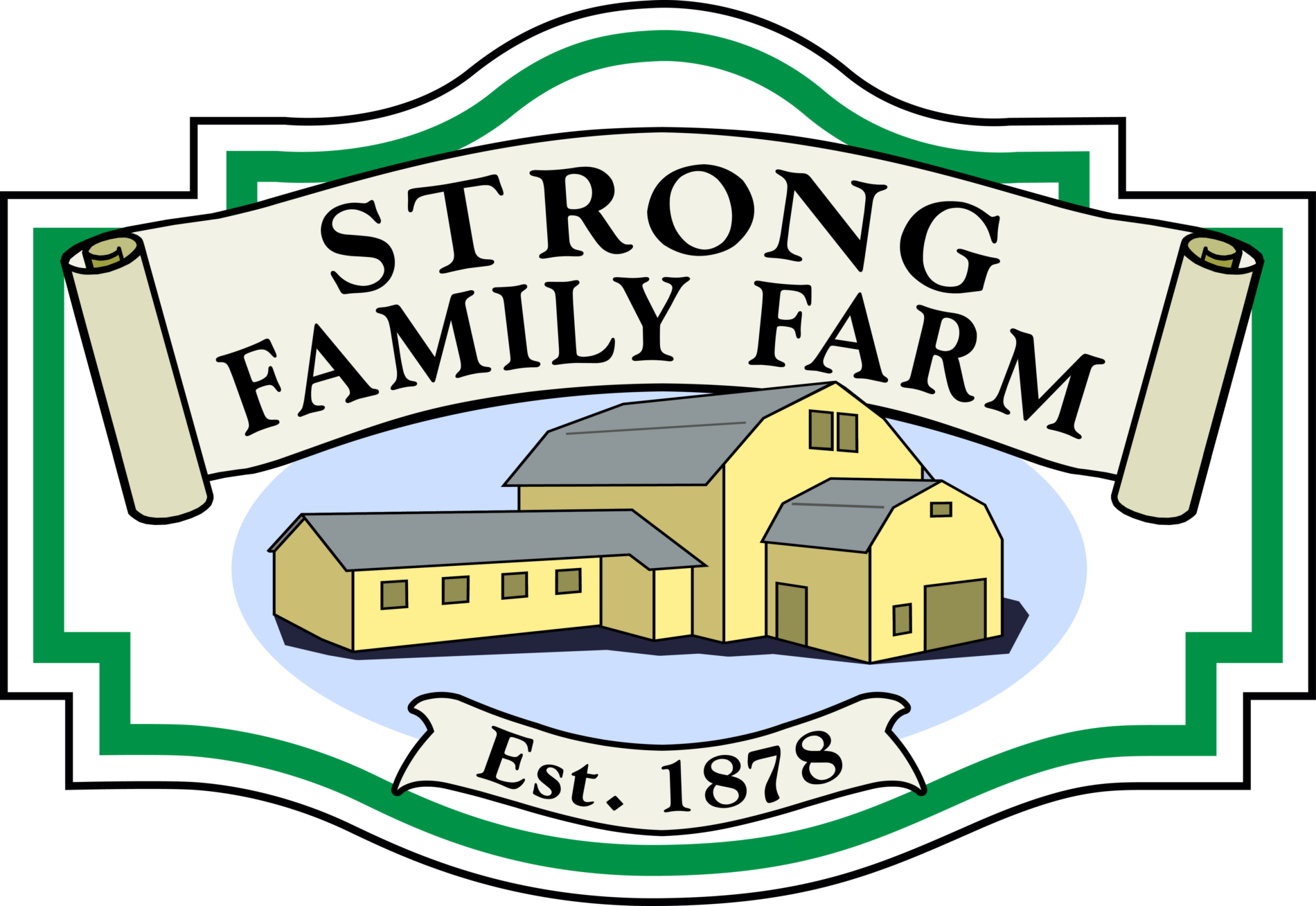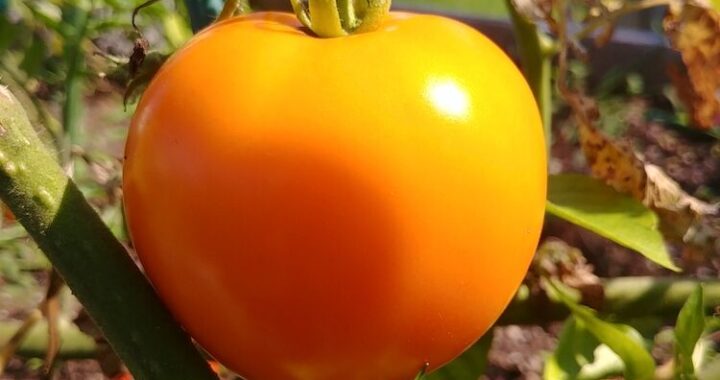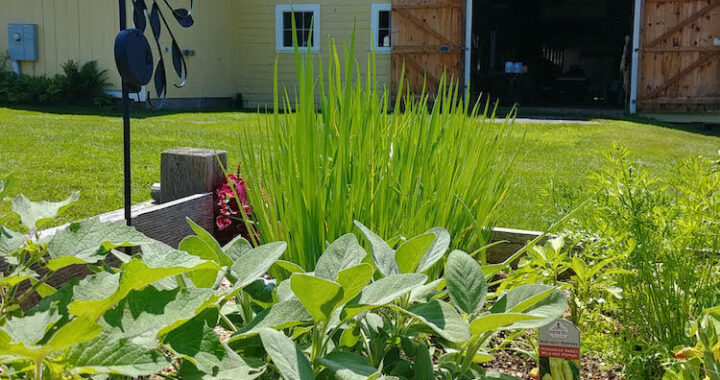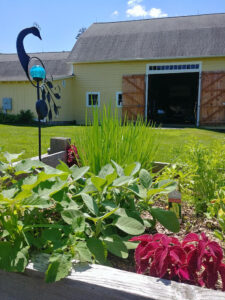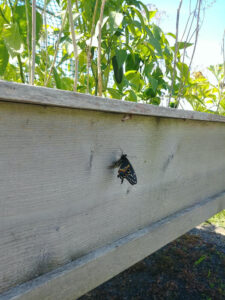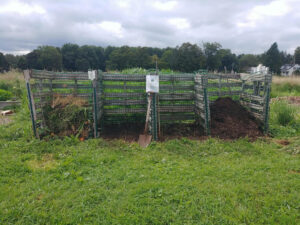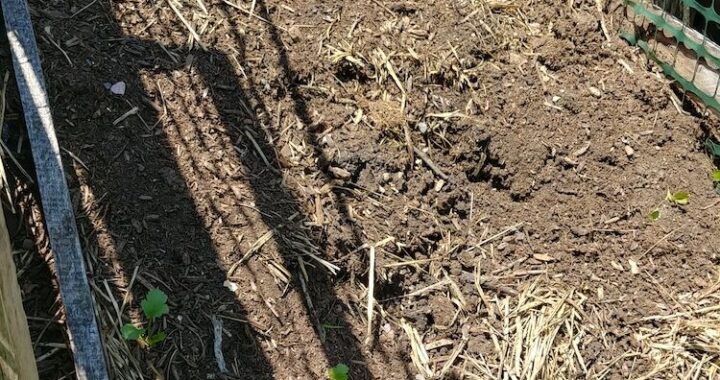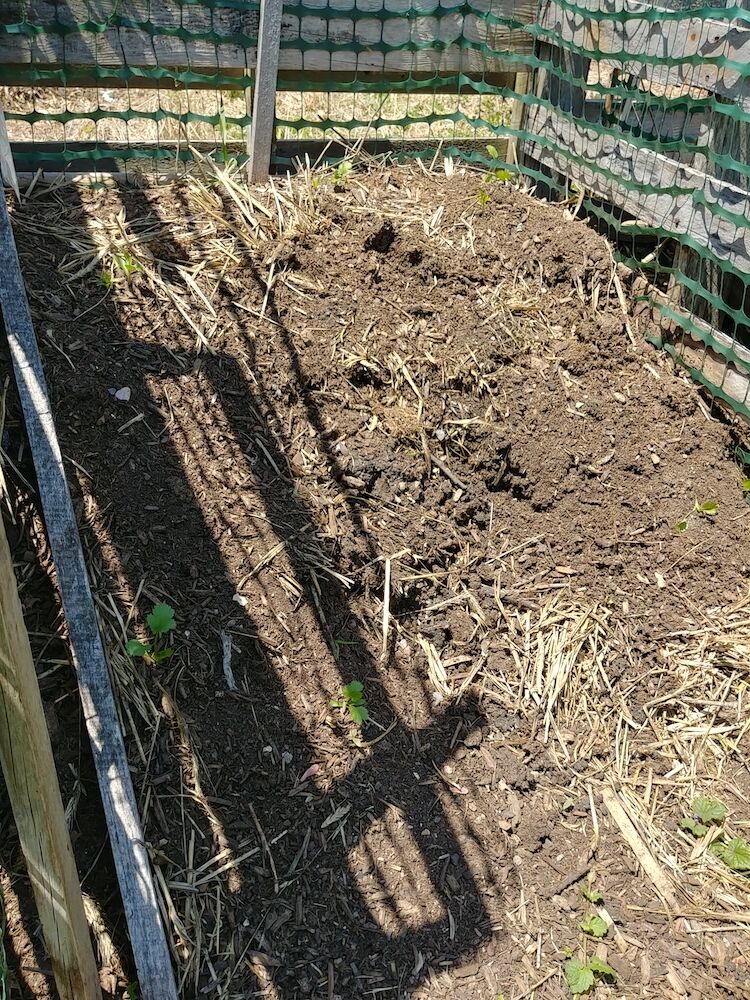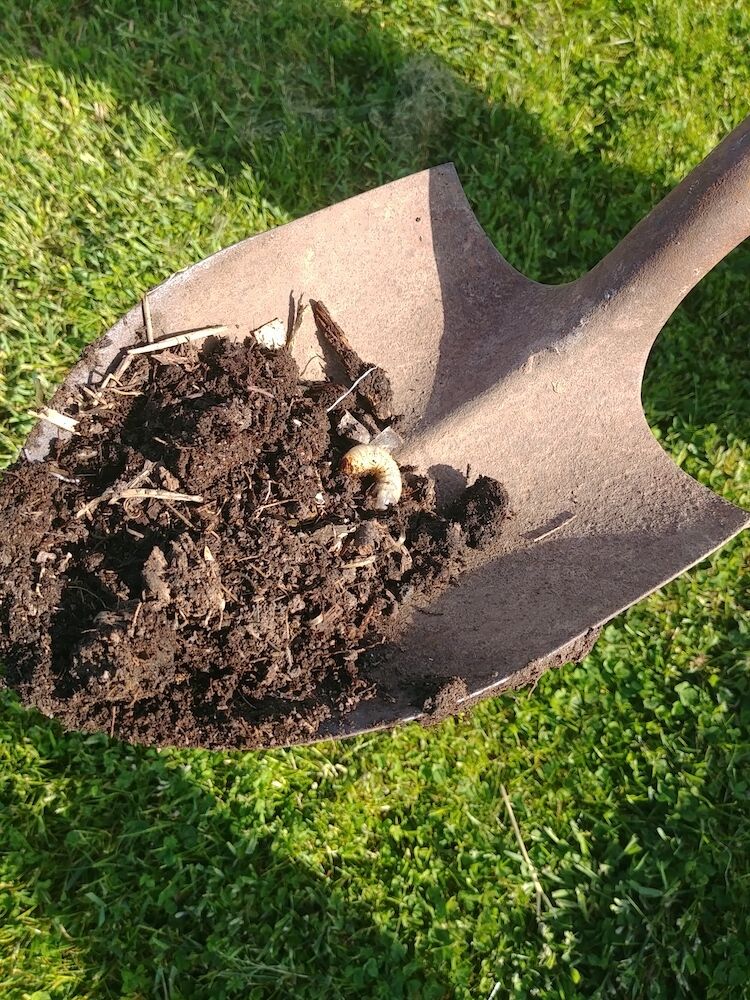Tomatoes!
Our tomatoes are still going strong! The gardeners have lots of varieties of tomatoes in their beds, from large heirlooms to small random hybrids that popped up on their own.
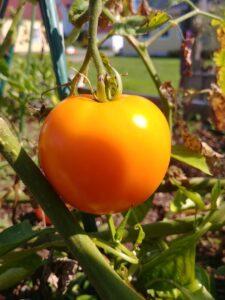
Beth’s orange tomato
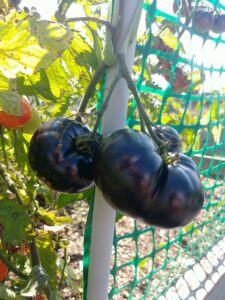
Sandee’s black tomatoes
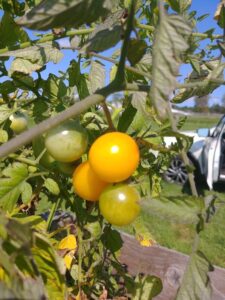
Blanche’s yellow cherry tomatoes
And one pest that loves tomato plants is the tomato hornworm (which is really a caterpillar that pupates into the five-spotted hawk moth). We found a total of 6, yes 6, healthy tomato hornworms on Melissa and Turner’s tomato plants. And we promptly fed each of them to the Strong Family Farm chickens, who were quite excited for the treats.
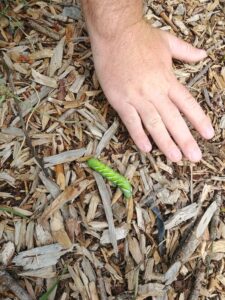
Tomato hornworms can grow to be up to 10 cm (3.9 inches) long!
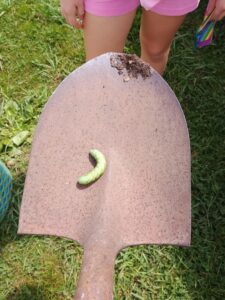
They are a bit juicy so we used a shovel to carry some of them over to the chickens.
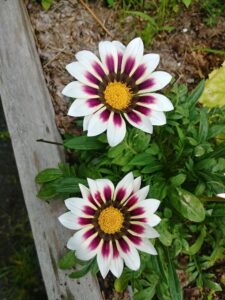
Maureen is growing vibrant gazanias.
A few gardeners are growing flowers that are just beautiful! While the majority of what we have in our beds is edible, there are some really lovely flowers as well, which the farm’s bees certainly seem to like.
With all the rain we’ve had it’s been a tough year to fight off water-borne diseases. So our Master Gardener intern Vicki Deleo has been helping us scout for disease and makes sure we remove diseased leaves and fruit properly: putting them in the trash can and not in the compost.
This coming Saturday is the SFF fall clean-up and volunteer appreciation day, so those who are able are invited to come to the farm for 9am to lend a hand with weeding, painting signs, and all kinds of tasks that our nonprofit needs to get done to function at its best. If you are new to volunteering with SFF just come see me in the volunteer center in the garage and I’ll get you set up!
If you have any questions about the Raised Bed Gardening program you can reach out to us at info@strongfarm.org.
-Erika
